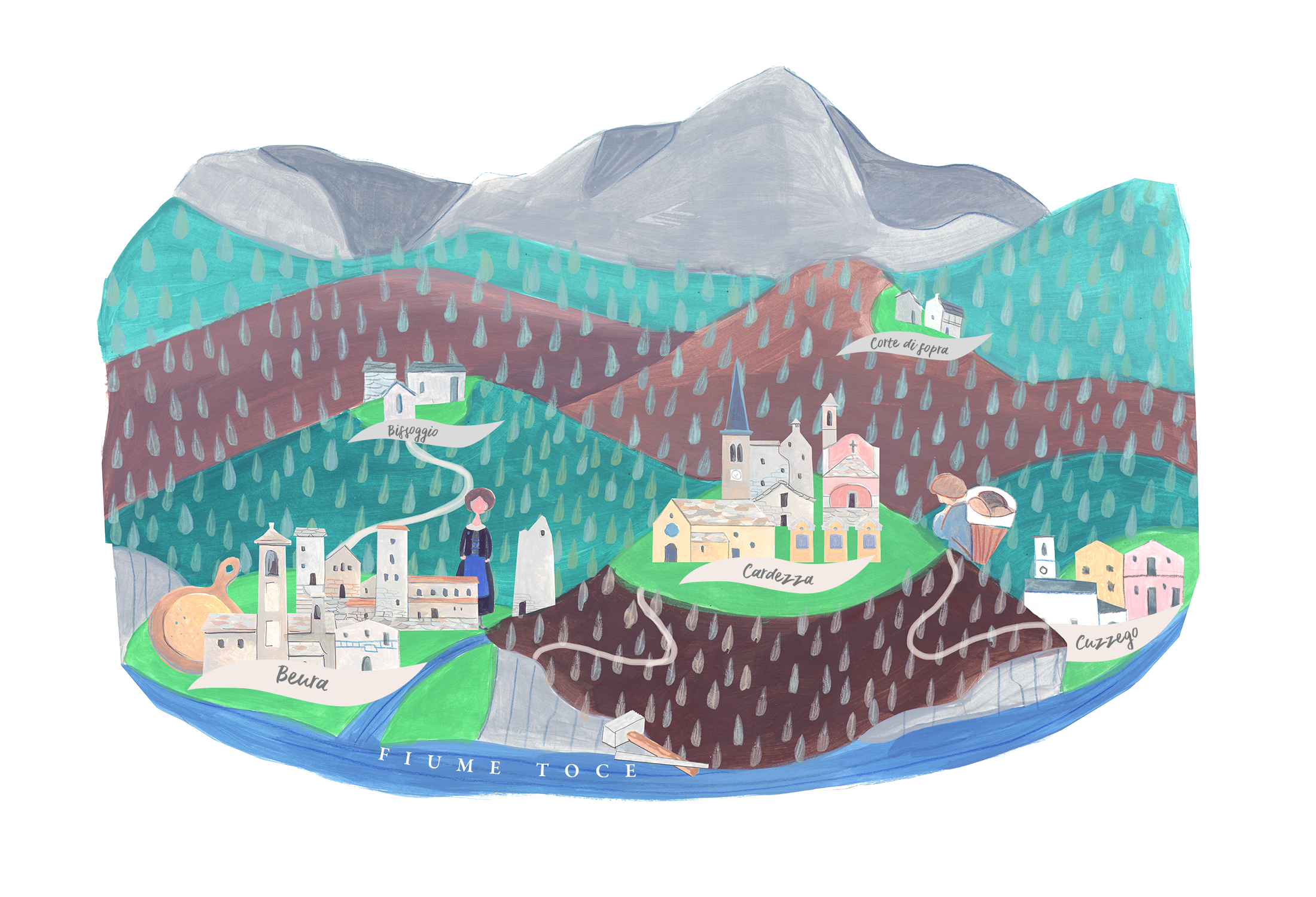
Il nucleo di Beura, unito nella denominazione comunale insieme alla frazione di Cardezza, deve il suo nome alla beola, roccia tipica dell’Ossola ed elemento essenziale per l’economia della zona fin dal XVI secolo, periodo a cui risalgono le cave estrattive più antiche. La sua storia, legata alla dominazione Viscontea, lascia tracce sul territorio, come i resti delle numerose torri di guardia medioevali o il quattrocentesco Castello Visconteo nel nucleo storico di Beura. La frazione più alta di Cardezza conserva il complesso parrocchiale cinquecentesco dedicato a S.Antonio Abate, in onore del quale ogni anno si compie la processione, con in spalla i gerli con il pane di segale da benedire, dalla frazione di fondovalle di Cuzzego lungo la cosiddetta “via del pane”.
The centre of Beura, joined in the municipality name with the hamlet of Cardezza, owes its name to the beola, a typical rock of Ossola and an essential resource for the economy of the territory since the 16th century, a period to which the most ancient mining quarries date back. Its history, linked to the domination of the Visconti family, leaves traces on the territory, such as the remains of the numerous medieval watchtowers or the fifteenth-century Visconti Castle in the historical village of Beura. The hamlet of Cardezza, which is located higher with respect to Beura, preserves the sixteenth-century parish dedicated to St. Antonio Abate, in honour of whom every year the procession takes place, during which the faithful carry the panniers with the rye bread to be blessed on their shoulders, from the hamlet of Cuzzego at the bottom of the valley along the so-called “Via del pane” (The way of the bread).
NAVIGA LA MAPPA QUI SOTTO NAVIGATE THE MAP BELOW

Scopri molte più cose di Beura-Cardezza! Discover more about Beura-Cardezza!